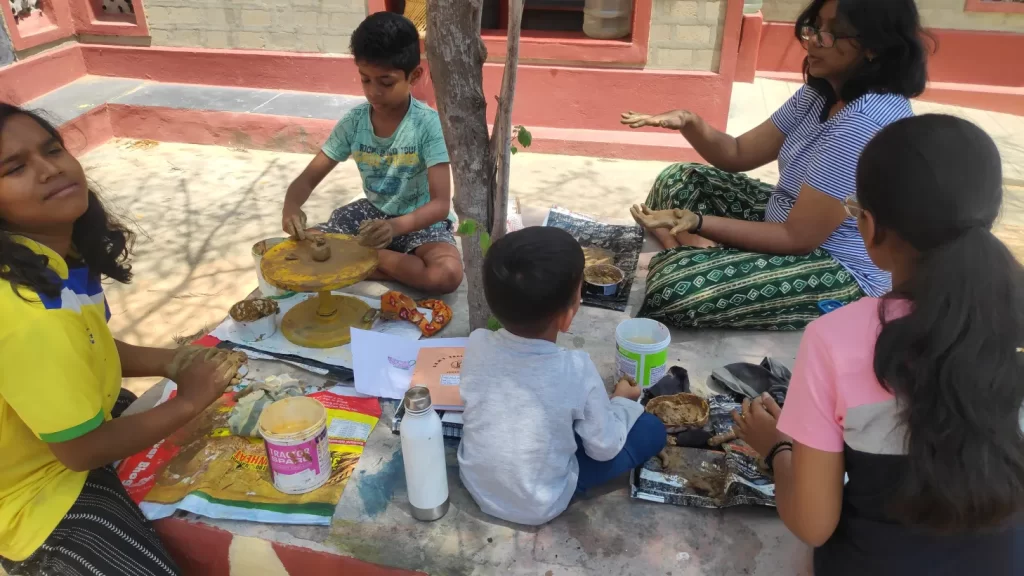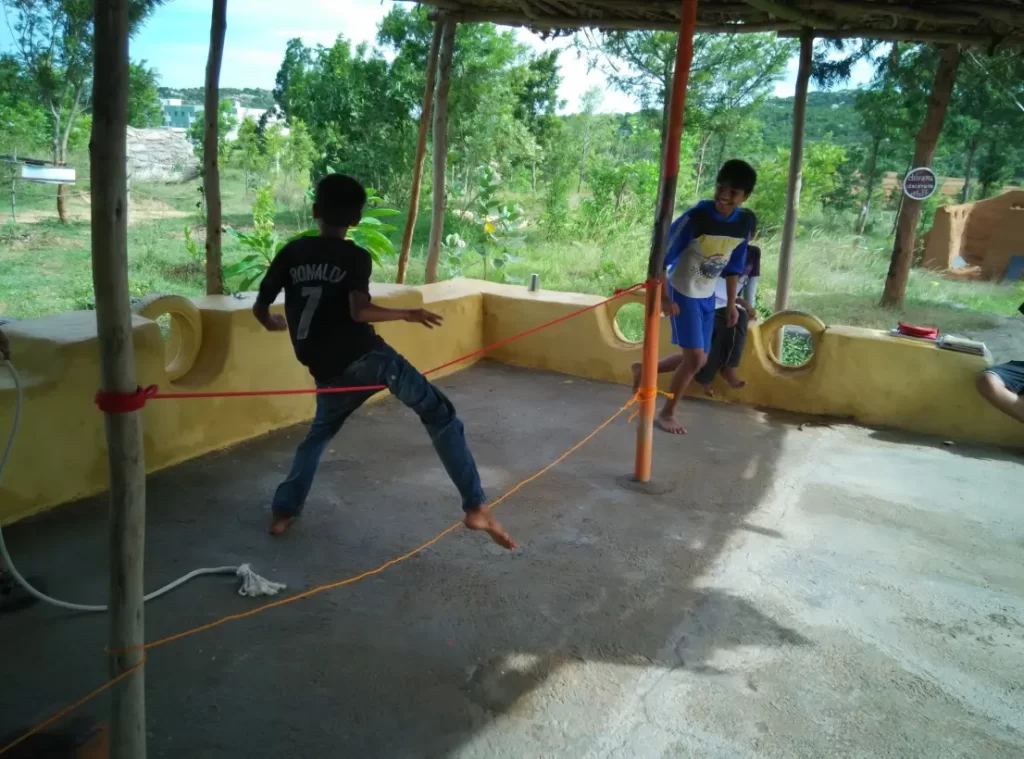How gentle cues of our environment shape our behavior. We know them as Nudges. Let’s explore can we use Nudges to enhance open learning.
Disclaimer – It is completely alright if your children don’t want to do anything. But if you feel they need a little support, here is a tool for you.
In the last few days, I have started playing a few online word games, such as Wordle and Spell Bee. My son sat next to me and watched. My son’s unintentional exposure to these games sparked a newfound interest in wordplay, leading to improved vocabulary and spelling skills. This demonstrates how subtle cues of the environment can influence our actions, even without conscious intent.
Throughout the day tiny cues continuously influence our behavior without us even noticing them. Calendar reminders don’t compel us to follow the event or the task but remind us about an upcoming task/event. Advertisers influence our behavior all the time by providing us with subtle cues. When a food menu mentions the ingredients and calories of various food items, we take cues and make an informed choice. Many times our choices are swayed by subtle cues in our environment.
What is a Nudge
Nudges are gentle prompts that guide us toward certain choices without restricting our freedom. They work by subtly shaping our decision-making processes, making it easier to choose a particular option. While nudges can steer us in a specific direction, we retain the ultimate freedom to make our choices.
A nudge is a gentle way to get attention. We are constantly bombarded with environmental cues but our attention spans are limited. Nudges can help us focus on what is truly important or aligns with our interests. The nudge theory proposes that by carefully designing our environment, we can influence the behavior and decision-making of individuals.
The concept of nudging was popularized by Richard Thaler and Cass Sunstein in their book “Nudge.” They define a nudge as –
any aspect of the choice architecture that alters people’s behavior in a predictable way without forbidding any options or significantly changing their economic incentives.” Nudges are not mandates but rather subtle influences that can guide us towards desired outcomes. To count as a mere nudge, the intervention must be easy and cheap to avoid. Nudges are not mandates. Putting fruit at eye level counts as a nudge. Banning junk food does not
It’s crucial to remember that every design choice, no matter how small, can influence behavior. Even seemingly insignificant tweaks to our environment can have a profound impact on our decisions.
Three principles should guide the use of nudges:
- Transparency: Nudges should be transparent and never misleading.
- Opt-Out Ease: It should be easy to opt out of a nudge, ideally with a single click.
- Welfare Focus: The nudged should benefit from the encouraged behavior.
Let’s actively shape the environment that nudges us and the people around us in the direction, we want to grow. The following are some of the ways we used nudging in Aarohi community or in our family.
Gamification
Chores or learning become fun and engaging when done thru games. At home we play bingo board to allocate the household chores to family members. People can leave the row or the column chore which they don’t prefer to do. Aarohi campus recently hosted a science challenge where participants need to design and create a boat that could carry maximum weight with minimum material. Within the 90-minute time limit, teams engaged in lively discussions, questioned assumptions, debated ideas, and competed to build the most efficient vessel.
Visual Cues
Just like the road signs are good reminders of responsible driving at home we use many cues for responsible living. For example we put waste blank/reusable paper sheets on walls and also as pile in multiple corners of the house. For all our writing, scribbling needs we consume those papers. Now by default all of us will pick a paper from that pile than using a post-it. Environment also plays a big role in shaping individual’s choice. Aarohi offers an extraordinary stimulating environment where people of all ages can participate in any activity they desire or find inspiring by observing others.For example the – clay station, wood station, various equipment to work with electricity, etc.

Social Influence
Getting inspiration from external sources may help us to make informed choices or educate us about different possibilities. Aarohi community has regular Jaatre sessions where people with various skills come and showcase their journey.
Using hurdles or resistance
Personally I use this option a lot. For example I keep the phone in a different room when i want to do focus work. Keeping process food snacking only for 2 days a week. The wheel of choice decides the day.
Default Choice

Aarohi community provides many options for people of any age to pursue many interests. However, it also provides default options such as sports/outdoor hour and reflection time. During the outdoor hour, community members design a game. This serves as a default choice for people to participate. While individuals may choose to opt out of these activities, there are no alternative options available Result of this is the sports time is one of the most loved part of the day in the community.
By thoughtfully incorporating nudges into our learning environments, we can create spaces that inspire, motivate, and empower individuals to reach their full potential. Nudging offers a powerful tool for creating more engaging and effective learning environments. By understanding how subtle cues and environmental factors can influence behavior, we can design spaces that foster positive habits, encourage learning, and empower individuals to reach their full potential. By implementing nudges in a transparent, opt-out-friendly, and welfare-focused manner, we can create a more supportive and inspiring learning environment for all.
